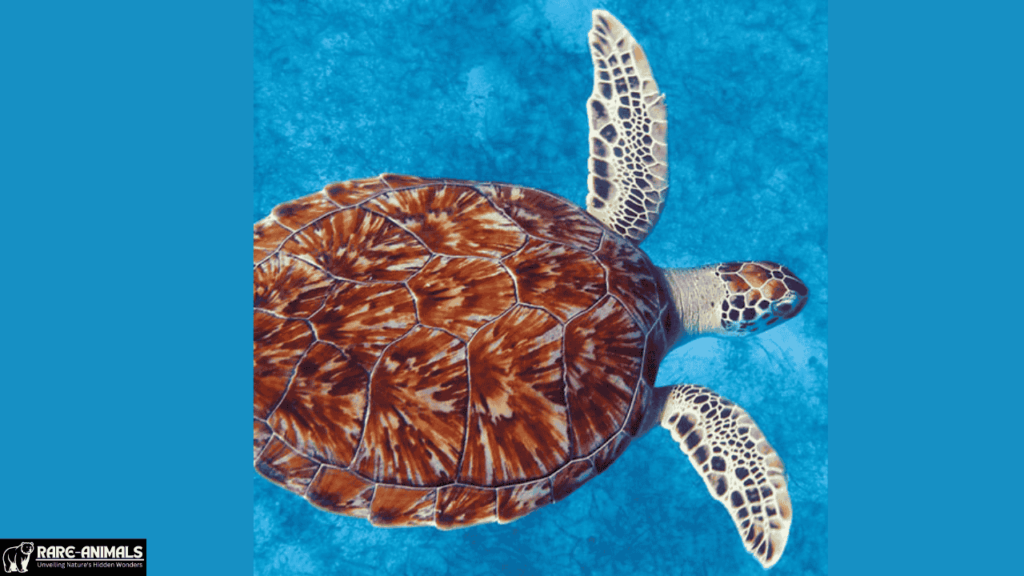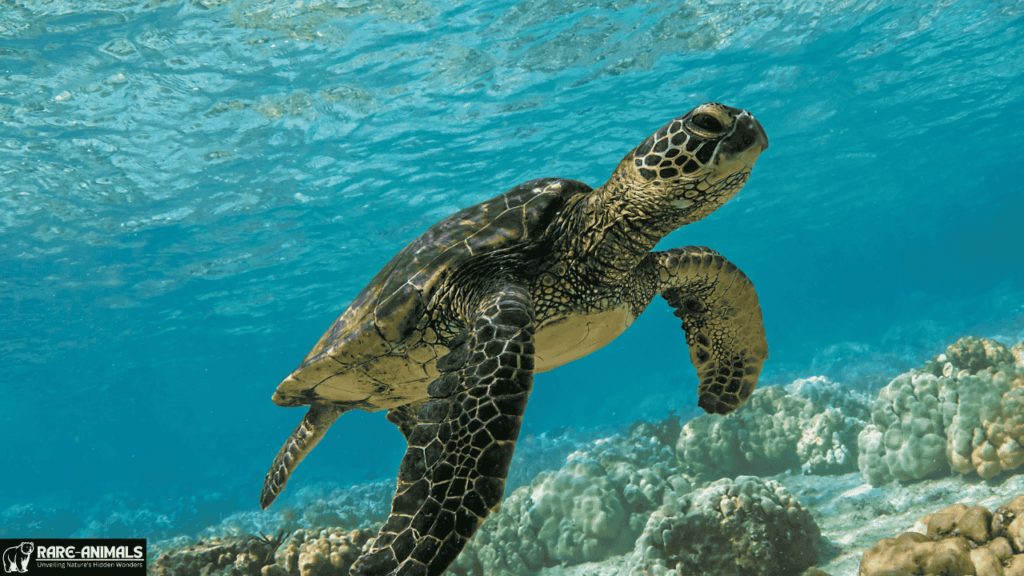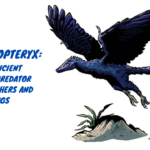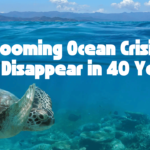The green sea turtle (Chelonia mydas) is one of the most fascinating marine creatures, capturing the attention of researchers and enthusiasts alike.
Unlike what its name suggests, the green sea turtle is not named for the color of its shell or scales. Instead, it derives its name from the greenish hue of its body fat, a characteristic influenced by its primarily herbivorous diet.
This article delves deep into the biology, habitat, diet, threats, and conservation efforts surrounding the green sea turtle while exploring the unique reason behind its name.
Taxonomy and Physical Description
Green sea turtles belong to the family Cheloniidae. Here is a brief overview of their taxonomy:
| Category | Details |
|---|---|
| Kingdom | Animalia |
| Phylum | Chordata |
| Class | Reptilia |
| Order | Testudines |
| Family | Cheloniidae |
| Genus | Chelonia |
| Species | C. mydas |
Physically, green sea turtles are medium to large-sized marine reptiles. Adults can weigh between 150 to 400 pounds and measure 3 to 4 feet in length. Their carapace (upper shell) is smooth and varies in shades of brown and olive, often with intricate patterns.
Despite their vibrant shells, the green sea turtle’s name is rooted in the coloration of its internal fat, which appears green due to its plant-based diet.
Habitat and Distribution
Green sea turtles inhabit tropical and subtropical waters worldwide. They are commonly found in:
- Coastal areas with seagrass beds
- Coral reefs
- Bays and estuaries
- Open oceans during migration
Global Distribution: Green turtles are found in the Atlantic, Pacific, and Indian Oceans, as well as the Mediterranean Sea. Major nesting sites include the beaches of Costa Rica, Australia, the Galápagos Islands, and Florida.
| Region | Notable Locations |
| Atlantic Ocean | Florida, Costa Rica, West Africa |
| Pacific Ocean | Australia, Hawaii, Indonesia |
| Indian Ocean | Seychelles, Madagascar, Eastern Africa |
| Mediterranean | Turkey, Cyprus |
Diet and Its Role in Naming
Green sea turtles exhibit a shift in diet as they mature:
- Juveniles are omnivorous, consuming jellyfish, sponges, and small invertebrates along with algae.
- Adults are predominantly herbivorous, feeding on seagrass and algae.
The diet of adult green sea turtles contributes to the green pigmentation in their fat. The high intake of chlorophyll from plants is metabolized, resulting in the greenish hue of their internal tissues.
Nutritional Benefits of Seagrass:
| Nutrient | Role in Turtle Health |
| Chlorophyll | Antioxidant properties |
| Fiber | Aids digestion |
| Vitamins (A, C, E) | Supports immune function |
| Minerals (Calcium) | Strengthens bones and shell |
Reproductive Behavior
Green turtles exhibit fascinating reproductive behaviors:
- Nesting: Females return to the beaches where they were born, often traveling thousands of miles. They dig nests in the sand and lay 75-200 eggs at a time.
- Incubation: Eggs incubate for about 45-70 days. The sand’s temperature determines the sex of the hatchlings—warmer sand produces females, while cooler sand produces males.
- Hatchlings: After emerging, hatchlings make a perilous journey to the sea, guided by the natural light horizon.
| Stage | Key Features |
| Nesting | Occurs every 2-4 years; nocturnal |
| Incubation Period | 45-70 days; temperature-dependent sex |
| Hatchling Survival | High predation rates during early life |
Threats to Green Sea Turtles
Despite their resilience, green sea turtles face numerous threats:
A. Natural Predators
- Hatchlings: Crabs, birds, and fish are common predators.
- Adults: Sharks and orcas occasionally prey on adults.
B. Human-Induced Threats
- Habitat Loss: Coastal development destroys nesting and feeding grounds.
- Pollution: Plastic ingestion and entanglement in fishing gear are major issues.
- Climate Change: Rising sea levels and temperature changes affect nesting sites and sex ratios.
- Poaching: Turtles are hunted for their meat, shells, and eggs.
| Threat | Impact |
| Habitat Destruction | Loss of nesting and feeding areas |
| Plastic Pollution | Ingestion leads to internal injuries |
| Climate Change | Alters habitat and reproduction cycles |
| Illegal Trade | Decline in population |

Conservation Efforts
Green sea turtles are classified as Endangered by the IUCN. Numerous conservation initiatives aim to protect this iconic species:
A. Legal Protections
- CITES: Prohibits international trade of green sea turtles.
- Marine Protected Areas (MPAs): Safeguard key habitats.
B. Community Engagement
- Local communities are involved in beach patrols and nest monitoring.
- Eco-tourism provides alternative livelihoods.
C. Scientific Research
- Satellite tracking helps monitor migration patterns.
- Genetic studies aid in understanding population dynamics.
| Conservation Measure | Description |
| Legal Frameworks | CITES, local laws against poaching |
| Habitat Restoration | Protecting seagrass beds and beaches |
| Public Awareness | Campaigns on reducing plastic use |
Conclusion
The green turtle is a remarkable marine reptile, celebrated for its unique name and ecological significance. Despite facing numerous threats, ongoing conservation efforts offer hope for the survival of this species.
The name “green sea turtle”, derived from the hue of its fat, underscores the profound connection between diet and biology. Protecting these creatures requires a collective effort, emphasizing the importance of global cooperation in preserving our planet’s biodiversity.
FAQs
Q1. Why is the green sea turtle’s fat green?
The green turtle’s fat is green due to its diet of seagrass and algae, which contain chlorophyll.
Q2. How long do green sea turtles live?
Green sea turtles can live 70 years or more in the wild.
Q3. What is the main threat to green sea turtles?
The main threats include habitat destruction, plastic pollution, and climate change.
Q4. Are green sea turtles herbivores?
Adult green sea turtles are primarily herbivorous, feeding on seagrass and algae. Juveniles are omnivorous.
Q5. How can we help conserve green sea turtles?
You can help by supporting conservation programs, reducing plastic waste, and advocating for marine protected areas.

Alveena is an experienced content writer with a knack for crafting engaging and insightful pieces. She thrives on breaking down complex ideas and presenting them as clear, captivating content that resonates with readers.







